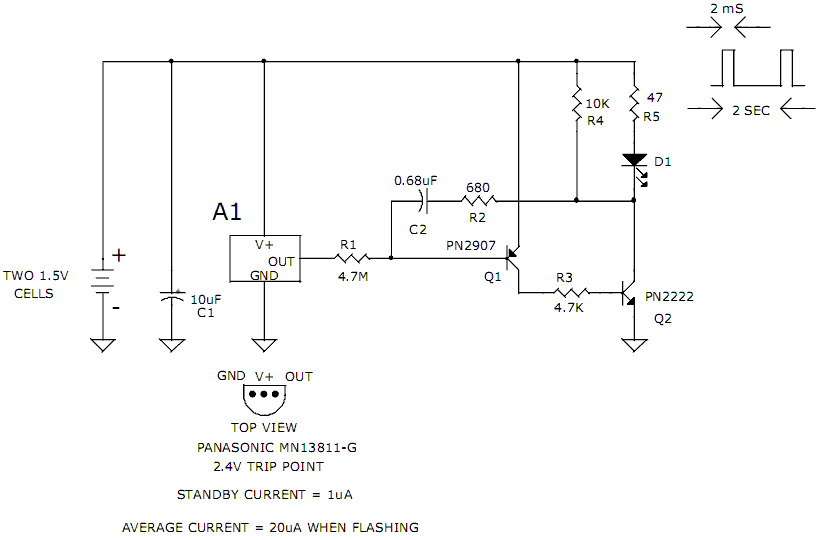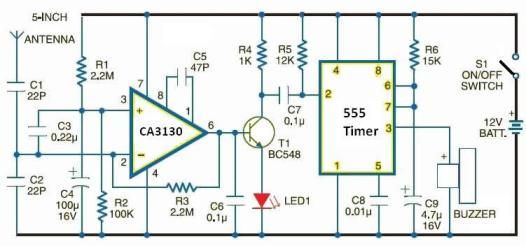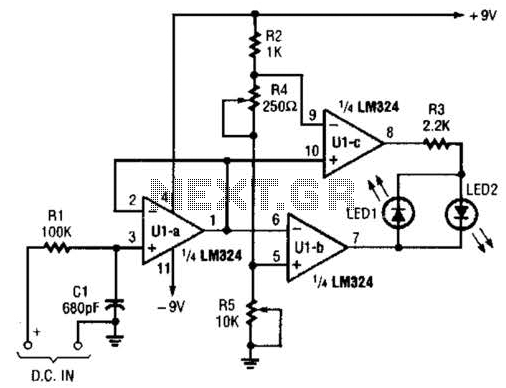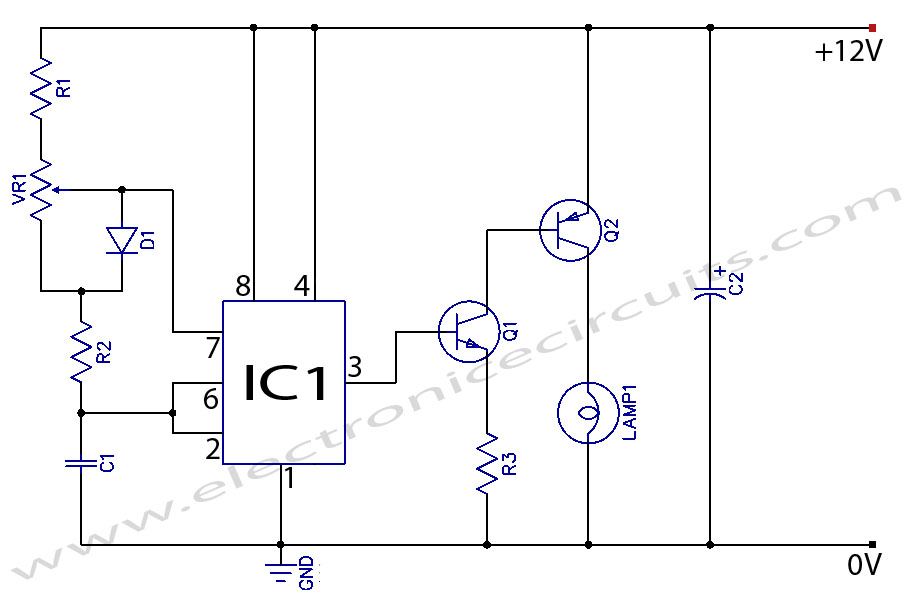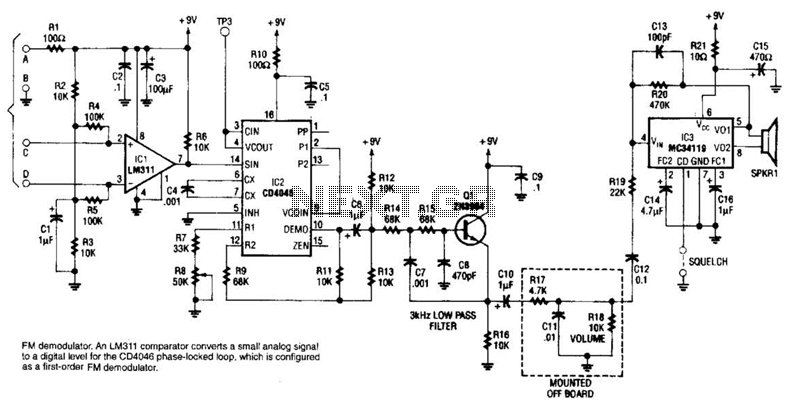
high voltage power supply circuit for fluorescent light

High-voltage power supply circuit for fluorescent light power supply. Refer to that page for an explanation of the related circuit diagram.
The high-voltage power supply circuit designed for fluorescent lights typically consists of several key components that work together to convert standard low voltage AC into the high voltage AC required to ignite and sustain the fluorescent lamp. The circuit usually includes a transformer, a rectifier, a capacitor, and a ballast.
1. **Transformer**: The transformer steps up the low voltage AC input (usually 120V or 240V) to a much higher voltage, often in the range of 1000V to 3000V. This high voltage is essential for starting the fluorescent lamp. The transformer is designed with a suitable turns ratio to achieve the required output voltage.
2. **Rectifier**: After the transformer, a rectifier is employed to convert the high voltage AC into high voltage DC. This can be accomplished using diodes arranged in a bridge configuration. The rectification process is crucial for ensuring that the voltage delivered to the lamp is unidirectional, which is necessary for stable operation.
3. **Capacitor**: A capacitor is often included in the circuit to smooth out any ripples in the DC output from the rectifier. This ensures that the voltage supplied to the fluorescent lamp is consistent and reduces flickering, which can occur if the voltage fluctuates.
4. **Ballast**: The ballast is a critical component that regulates the current flowing through the fluorescent lamp. It provides the necessary starting voltage to initiate the lamp and limits the current during normal operation to prevent damage. The ballast can be either electromagnetic or electronic, with electronic ballasts providing better energy efficiency and performance.
5. **Safety Features**: Due to the high voltages involved, safety features such as fuses, circuit breakers, and protective enclosures are often included to prevent electrical hazards. These components help to ensure that the circuit operates safely under various conditions.
In summary, the high-voltage power supply circuit for fluorescent lights integrates a transformer, rectifier, capacitor, and ballast, along with necessary safety features, to effectively power fluorescent lighting systems. Proper design and implementation of these components are essential for reliable and efficient operation.High-voltage power supply circuit for fluorescent light power supply. Go to that page to read the explanation about above power supply related circuit diagram. 🔗 External reference
The high-voltage power supply circuit designed for fluorescent lights typically consists of several key components that work together to convert standard low voltage AC into the high voltage AC required to ignite and sustain the fluorescent lamp. The circuit usually includes a transformer, a rectifier, a capacitor, and a ballast.
1. **Transformer**: The transformer steps up the low voltage AC input (usually 120V or 240V) to a much higher voltage, often in the range of 1000V to 3000V. This high voltage is essential for starting the fluorescent lamp. The transformer is designed with a suitable turns ratio to achieve the required output voltage.
2. **Rectifier**: After the transformer, a rectifier is employed to convert the high voltage AC into high voltage DC. This can be accomplished using diodes arranged in a bridge configuration. The rectification process is crucial for ensuring that the voltage delivered to the lamp is unidirectional, which is necessary for stable operation.
3. **Capacitor**: A capacitor is often included in the circuit to smooth out any ripples in the DC output from the rectifier. This ensures that the voltage supplied to the fluorescent lamp is consistent and reduces flickering, which can occur if the voltage fluctuates.
4. **Ballast**: The ballast is a critical component that regulates the current flowing through the fluorescent lamp. It provides the necessary starting voltage to initiate the lamp and limits the current during normal operation to prevent damage. The ballast can be either electromagnetic or electronic, with electronic ballasts providing better energy efficiency and performance.
5. **Safety Features**: Due to the high voltages involved, safety features such as fuses, circuit breakers, and protective enclosures are often included to prevent electrical hazards. These components help to ensure that the circuit operates safely under various conditions.
In summary, the high-voltage power supply circuit for fluorescent lights integrates a transformer, rectifier, capacitor, and ballast, along with necessary safety features, to effectively power fluorescent lighting systems. Proper design and implementation of these components are essential for reliable and efficient operation.High-voltage power supply circuit for fluorescent light power supply. Go to that page to read the explanation about above power supply related circuit diagram. 🔗 External reference
